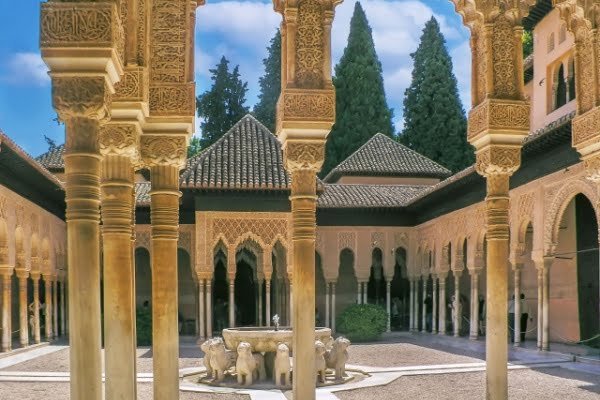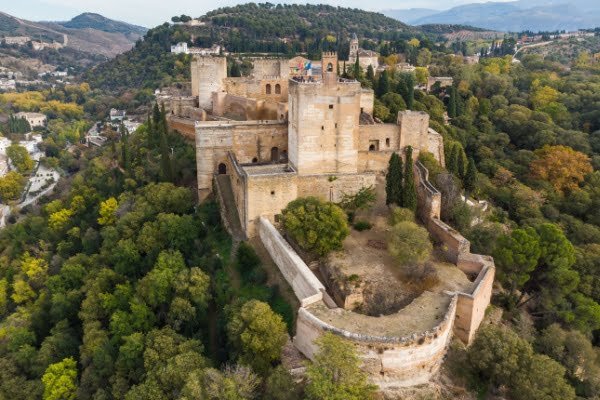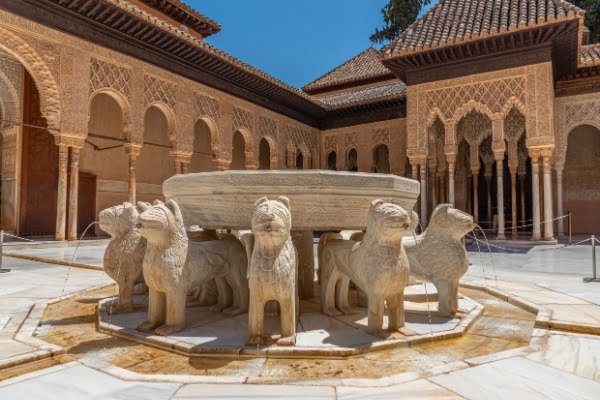Alhambra’s Architecture: A Tapestry of Styles
Alhambra’s Architecture: A Tapestry of Styles
The Alhambra, nestled in Granada, Spain, is far more than a mere architectural wonder. It’s a masterpiece intricately woven with a myriad of styles, from Islamic to Mudéjar to Renaissance, each telling tales of artistic brilliance and cultural fusion.
Prepare to be captivated as we delve into the rich tapestry of Alhambra’s architecture, unveiling the intricate styles and narratives that define this iconic palace complex.

Nasrid Dynasty: Crafting a Unique Style
While the grandeur of the Umayyad era in Córdoba had faded by the time the Nasrid dynasty built the Alhambra, its architects carved a distinct path. Unbound by the influence of the Córdoba Mosque, they crafted a unique style, drawing on aspects of Andalusian architecture like the horseshoe arch and scallop designs, but imbued with their own innovative spirit. Their defining ambition was to transform every surface, large or small, into a canvas of intricate decoration.

Ornate Embellishments and Symbolism
False arches, purely aesthetic additions, were woven into the structure. Walls became vibrant tapestries of rich ceramics and intricate plasterwork, framed by meticulously carved wood. This pursuit of embellishment transcended even Islamic restrictions on figurative art.
Classical calligraphy flourished, with verses praising God and poems by courtly bards adorning many spaces. Nature became a source of inspiration, with stylized vines, interlacing patterns, and intricate geometric webs adorning every nook and cranny.

Nasrid Column Design and Mocarabe Vault
However, the most distinctive element was the Alhambra’s very own column design. Slender and elegant, these columns featured a distinctive concave base and a capital in two sections.The lower section, adorned with simple geometric patterns, gave way to a prism decorated with stylized foliage.
But the true crown jewel of Nasrid decoration was the mocarabe vault. Imagine a mesmerizing honeycomb of miniature cells, meticulously crafted and stacked, creating breathtaking ceilings like those in the Hall of the Abencerrajes and the Hall of the Two Sisters.

Transition and Interplay of Styles
Each decorative element, from the humble scallop to the awe-inspiring mocarabe, tells a story of artistic innovation and dedication. The Nasrid architects weren’t simply copying past styles; they were weaving their own dreams into the very fabric of the Alhambra, creating a world uniquely their own and leaving a legacy that continues to mesmerize us today. However, the Alhambra’s story doesn’t end with the Nasrid dynasty.

Christian Influence and Renaissance Addition
In 1492, the tide turned, and the Catholic Monarchs, Ferdinand and Isabella, conquered Granada, ushering in a new era. The Alhambra, transformed into a royal Christian residence, witnessed a fascinating interplay of two distinct styles. Imagine the serene courtyards bathed in Arabic sunlight, now resonating with the echoes of Christian faith. The grandiose vision of Charles V, Holy Roman Emperor, saw the construction of his namesake palace within the Alhambra walls.

Juxtaposition and Cultural Exchange
This imposing Renaissance structure stands in stark contrast to the delicate filigree of Nasrid architecture, yet somehow finds its place in this evolving narrative. Carved details reminiscent of Roman baths adorn the Charles V Palace, its circular courtyard a stark departure from the traditional Arab layouts. This juxtaposition of styles tells a story of conquest, cultural exchange, and ultimately, acceptance.

Alhambra’s Architecture: An Enduring Testament
So, as you explore the Alhambra’s diverse architectural tapestry, remember, each stone whispers not just of a singular history, but of a complex dialogue between cultures, leaving an enduring testament to the ever-evolving human spirit.




